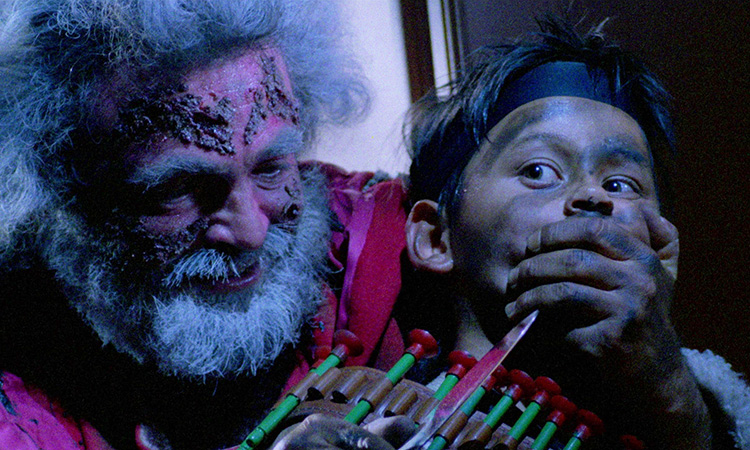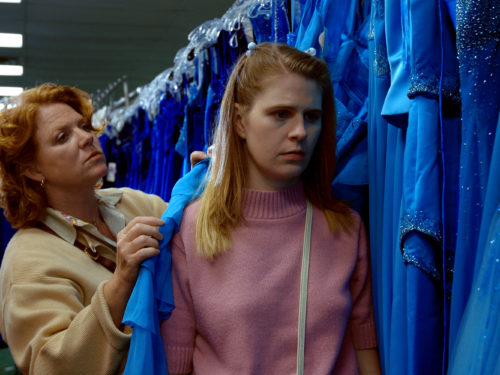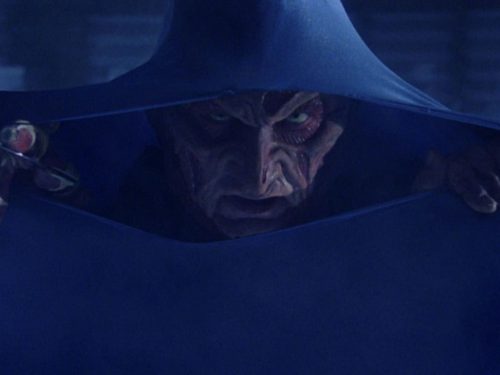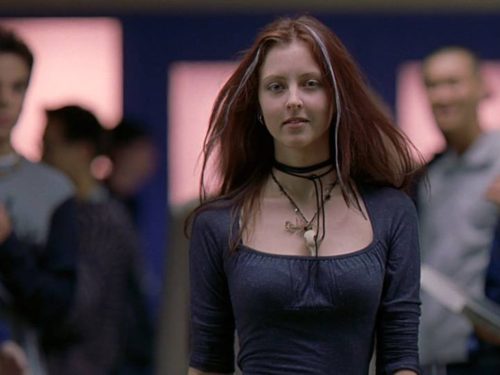Before Home Alone, René Manzor created a darker Christmas home invasion film where a child’s wish to see Santa turns deadly
Before the evils of the internet were as blatantly obvious as they are today, it probably seemed like a decent idea to let children share their Christmas wishes with anonymous Santas in a chat room. Is it really that much weirder than lining up in the cold to let your child sit on a stranger’s lap and whisper that, yes, they have been a good boy or girl all year? In economic terms, one chatroom Santa could talk with multiple children at a time and save the need for overloaded knees everywhere. But it would take just one ill-intentioned Santa to collapse the entire operation.
Holidays have long been easy targets for horror films. Like any tradition, with enough time passing, someone is bound to create an exploitation version of the story where the central figure of the legend turns into a killer. And what legend is more ripe for turning sour than that of the man in a red suit who, on the same winter night every year, enters homes and delivers packages while people sleep? The reaction to Silent Night, Deadly Night (1984) is likely the cultural apex of killer Santas on film because of the genuine (and hilarious) outrage it provoked. People picketed outside of theaters trying to eradicate the film with signs reading “Santa is NOT a murderer!!” and “Shut this movie down all over town!” Even after weathering Gene Siskel’s attempts to publicly shame the filmmakers and studios involved for profiteering off of “blood money,” the film quietly became a cult classic and yearly staple for theaters across the country, proving that the general public was every bit as naughty as the filmmakers.
Related: You Better Not Cry: Christmas Evil’s Melancholy Holiday Madness by Bennett Glace
By now, the killer Santa has become its own subgenre, along with every other holiday icon: Killer snowman? Check. Easter Bunny? Check. Killer Valentines? Thanksgiving Turkey…? Yeah. Would we really be left hanging there? But as the normalization of childhood icons on murder sprees proliferated, most were cheap exploitation filth that attempted to cash in on the dispiriting of the season. A select few Christmas horror films — including Silent Night, Deadly Night, Bob Clark’s Black Christmas (1974), Christmas Evil (1980), and René Manzor’s Deadly Games: Dial Code Santa Claus — stand tall among the genre and reach highs that few others come close to. Except for Black Christmas (though “Billy” shares similar motivations) these films all feature killer Santas triggered by seasonal yuletide trauma. Some dish out justice for those who have been naughty and nice, some are out for revenge, but they all transform into something deadly once they commit to the costume. In Dial Code Santa, the matchup of killer Santa vs. victim is at its best. By framing the deadly game of cat-and-mouse from a childlike perspective, it brings out the killer instincts of the child who’s belief in Santa is being challenged, and a twisted childishness in the killer himself.
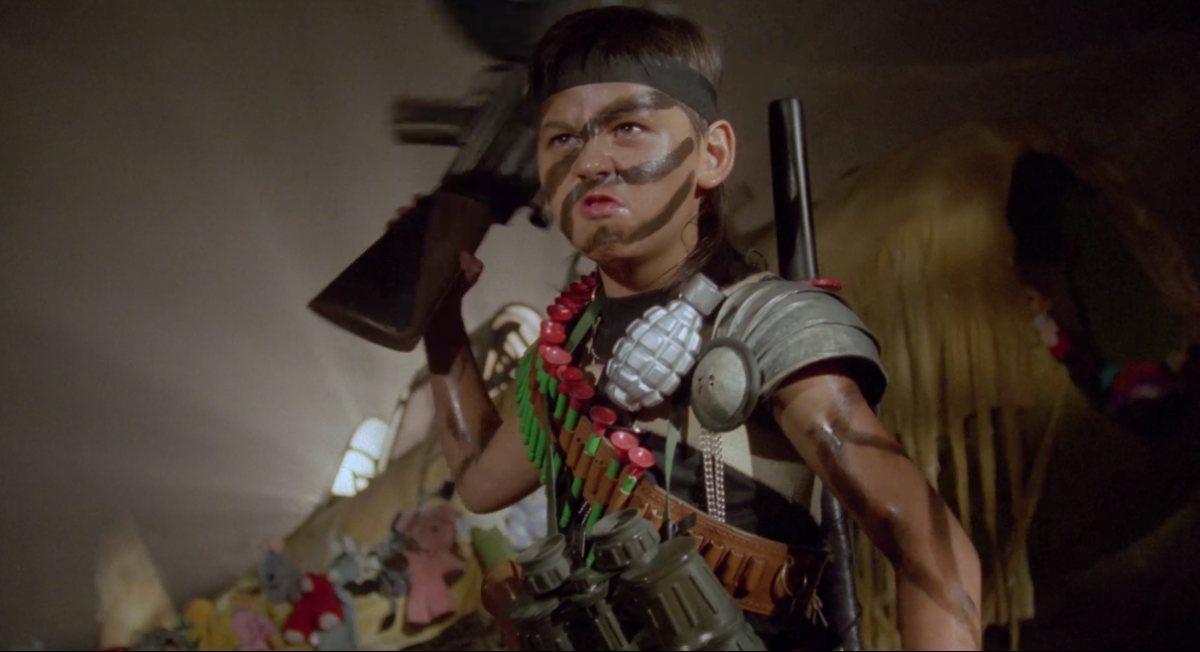
Nine-year-old Thomas (Alain Musy, director René Manzor’s son) loves nothing more than creating a fictional battlefield in his home. He lives in a mansion with his mother (Brigitte Fossey) and grandfather (Louis Ducreux), who he calls Papi. He dresses like Rambo, complete with war paint, toy guns, knives, and a suction-cup arrow belt slung across his shoulder. In the hallways he’s constructed trapdoors that he uses to capture his trusty dog, J.R., when they play battle. He’s also a computer whizz and has built a security system with a live video feed connected to a wristband monitor. Despite his age, Thomas also knows his way around an engine and takes the family car out for spins with mixed results. From a material perspective, Thomas has everything. His mom runs one of the major department stores in France, and we gather that his father’s side of the family is wealthy beyond belief. Hidden inside the house is a secret passageway that even his mother doesn’t know exists, a treasure trove of all of his paternal ancestor’s toys. It’s a place that Thomas hopes to add to for his own children. He even tells his mother that one day he hopes to start selling toys to Santa.
Unsurprisingly, Thomas’ mother has to work late on Christmas Eve. This leaves Thomas and his grandfather at home without her. We see that Thomas gets his enthusiasm and drive from his mother when she walks into a board meeting and spews grandiose plans for a last-minute Christmas festival that actually comes to fruition. When she talks, people listen. But when she calls to tell Thomas she’ll be home late, she reminds him why he needs to go to sleep: “You shouldn’t try to see Santa Claus because he’ll get mad and turn into an ogre.” Despite registering the warning, Thomas’ mission has begun.
Of course Thomas is excited about the prospect of new toys, but his greatest concern this Christmas is to prove that Santa is real. The uncertainty has driven him to deeper philosophical questions about history and the burden of proof. While talking with his grandpa, he asks how any of history can be true if Santa is fictional. His logic says that if Santa’s a fake, what’s Napoleon or the cavemen? While chatting with an anonymous Santa in the 3615 Pere Noel message board, Thomas tries to prove to his friend Pilou that he’s connected with the real St. Nick. Pilou has recently renounced his Clausian faith and prompts Thomas to ask basic questions expecting stock answers in return. They’re both shocked when the responses are slightly hostile and find it even stranger when Santa asks, “Do you want to play with me?” On the other end is a bearded man with curly hair (Patrick Floersheim) who we’ve already seen crash a snowball fight — his intrusion caused the gang of children to scatter. He has bright eyes and a childish energy about him. He’s on the Pere Noel message board at a public kiosk, which clearly isn’t functioning properly. He’s outside of a department store and discovers that he’s chatting with the manager’s son. The store happens to be hiring Santas for the last-minute festival. He snags the job and quickly runs into trouble. When a little girl sits on his lap, she takes a deep look at him, says, “I don’t like your face,” and pulls his fake beard off. He responds by slapping her. Thomas’ mother fires him, and when he connects the dots between her and his young message board correspondent, he decides to fulfill his promise to play a game with Thomas.
One of the essential elements of killer Santa films is the moment in which they fully embrace the role. In Christmas Evil, Harry (played by Brandon Maggart, father of Fiona Apple) takes long looks at his face in the mirror throughout the film, but he doesn’t seem to accept himself until he glues on the white beard. His eyes fill with tears and he can only groan with glee as he sees Santa in the mirror for the first time. He’s become his idol. Similarly, in Silent Night, Deadly Night, after witnessing a Santa murder his parents as a child, Billy sees it as destiny when he’s forced to play Santa for his toy store and begins his night of punishment. Once the costume is on, they take the spirit of the holiday to its twisted extreme. Dial Code Santa is among the most effective killer Santa movies because it so convincingly paints the killer Santa as an unfortunate guy who’s been dealt a few too many bad hands over the holidays and snaps. This Santa — the character is given no other name — is using St. Nick as a means of becoming someone new. In what could be the creepiest use of fake snow ever, Santa sprays his hair and beard and watches as it turns white. As the color changes and he begins to look more like Father Christmas, he shakes with excitement. He empties the whole can, with each particle making him giddier until he’s almost jumping for joy. Manzor had Florsheim approach his role almost as if he were acting in a silent film. At the time, Florsheim was one of the top voice actors in France — he often dubbed Michael Douglas, Robin Williams, and William Shatner, among others. They felt hearing Florsheim speak might be a distraction for audiences because his voice was so recognizable. He turned in an incredible performance: Watch his eyes as the scene progresses and you’ll see him be completely overcome by the transformation, his ecstasy conveyed nonverbally. He then sits in a rocking chair, his eyes a tear-stained red. His warpaint is on, the night is young, and he’s been reborn. No one will tell him his beard is unconvincing this time.
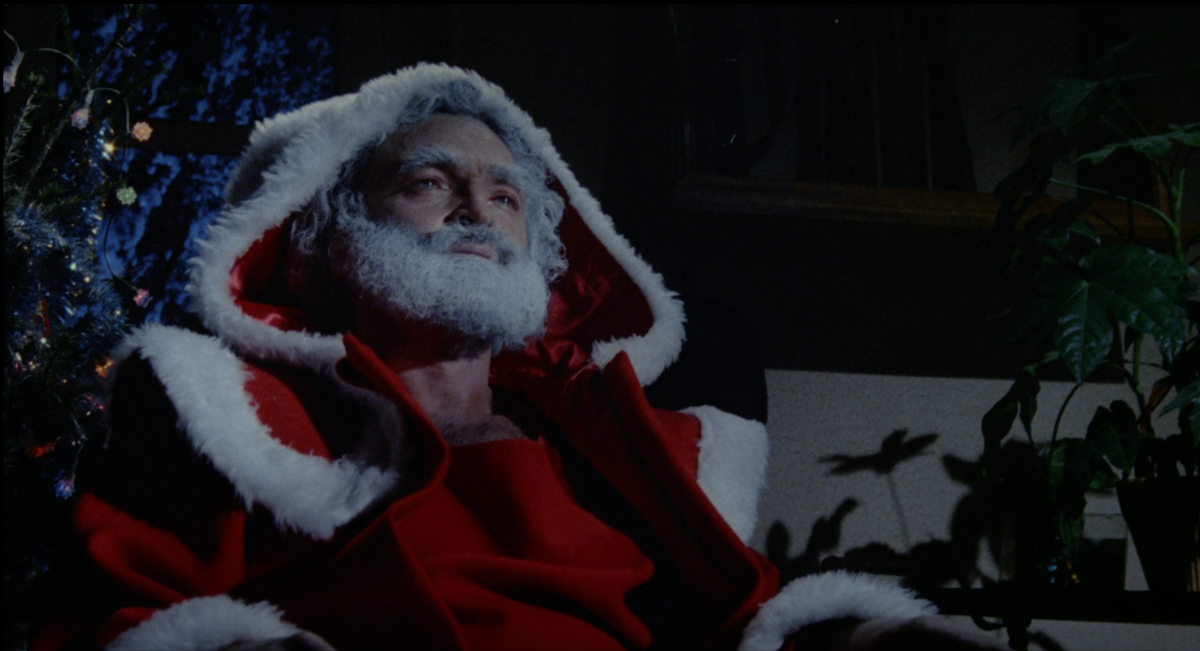
At home, Thomas plans to stake out the fireplace all night. His wrist console has the house wired; Santa won’t come in unnoticed. Late in the night, as Thomas is losing faith and nodding off, a rope drops down the fireplace and soot rains from the chimney. Thomas’ face lights up with the magic of a hundred Hallmark movies. The big man with the toys has appeared in the flesh, proving his skeptical friend wrong. But J.R. comes running at the intruder. Thomas is at first thrilled as his dog barks and bites at Santa’s robe. His face quickly turns to terror as Santa kicks back and mercilessly kills J.R. with a silver serving utensil. The scene is shot from Thomas’ perspective under the table with cuts to his reaction sliced between. It’s a jarring shift from dream to nightmare. As Santa slowly bends down to peek under the table, he finds his target hiding. The deadly game begins.
Legend has it that Dial Code Santa Claus was an inspiration for a later American holiday classic about a child left home alone while two bumbling burglars attempt to rob his house. But that film ratchets up the cuteness and plays more like a live-action cartoon. We never have to worry that the child will face any real danger. On the other hand, Dial Code Santa quickly pivots into a full-fledged home defense and survival movie. Thomas reacts to Santa’s intrusion how we all hope we would in such a horrific scenario. He immediately hops into action and evacuates his sleeping grandpa. From the earliest moments of conflict it’s clear that Thomas has more in common with John McClane than Kevin McCallister.
In a film full of brilliant lighting and visuals, Dial Code Santa’s most harrowing images occur in the garage. As Thomas and his grandfather try to escape the mansion grounds, they head for the car that Thomas repaired earlier in the day. But as they open the garage door and the engine sputters, they find Santa waiting with arms outstretched in a messianic pose. He slowly approaches the car and Thomas and Papi realize they’re in serious trouble. He taunts them and hits the car hood with his hands. He headbutts the windshield. With his forehead dripping blood, he circles the car and grabs a sledgehammer to bash in the trunk, taillights, and hood. It’s the start of Santa’s visual deterioration, as by the end of the film his face will be cut and burned, cloaked in layers of blood, mud, and sauna sweat.
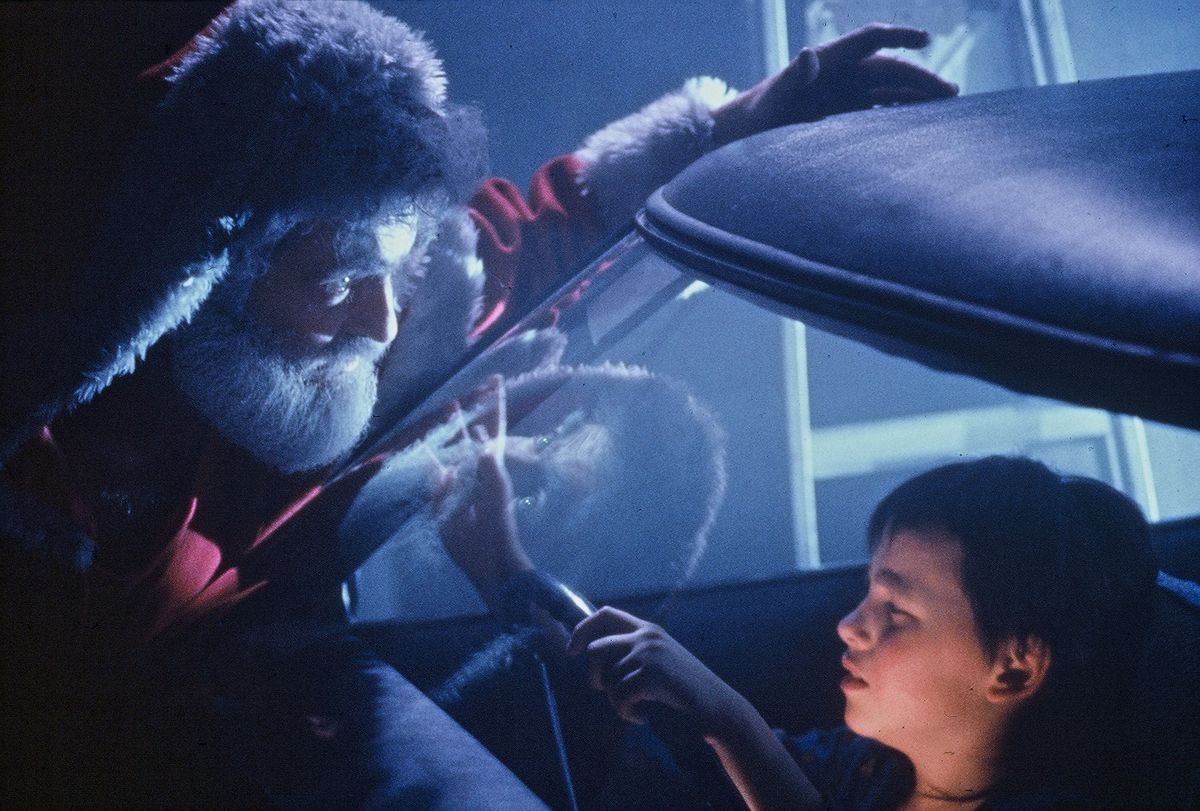
Their battle proceeds with both Thomas and Santa seemingly always one step ahead of each other. For every attack by Santa, Thomas has a counterattack; For each of Thomas’ traps, Santa has a way out and a shortcut to where Thomas and Papi are headed next. The final act begins with Thomas telling Santa over the house’s loudspeaker, “Even though you’re Santa Claus, I swear you’re gonna be scared.” With a montage set to Bonnie Tyler’s “Merry Christmas,” Thomas readies for the final showdown with a fresh batch of warpaint. Armed with sharpened colored pencils, flaming suction cup arrows and tripwire crossbows with darts, this is where the potential influence on Home Alone is most undeniable. The major difference is that Thomas is truly fighting for his and his grandpa’s lives rather than just keeping the cartoonish Wet Bandits from robbing his family’s home. Whereas Kevin uses marbles to trip his intruders for a physical gag, Thomas loads a homemade grenade with marble shrapnel. As such, when the standoff nears its conclusion, Thomas trades in his plastic combat knife for any children’s toys that can be turned lethal. This is a fight for survival. The game has no rules.
The film’s opening quote, from psychologist Bruno Bettelheim, frames the events as a formative moment in Thomas’ young life: “All children believe in magic and cease to do so only when they grow up. Except those who have been too disappointed by reality to expect any reward from it.” By Christmas morning, Thomas’ belief in magic will be severed. In a brilliant contrast, as the end of the film approaches, the biggest question we’re left with is whether this Santa should in fact be looked at as an ogre, or as something more tragic. As the early snowball fight scene shows, the man wearing the red robe clearly wants to be one of the kids. He seems to be lost in the world of adults and has yet to fully let the magical feeling of Christmas go. Through all of the twists and turns that his “game” takes, he embodies both a merciless killer and an overgrown, childish spirit fully committed to chasing some twisted fantasy in the name of fun. He’s hard to decipher, which is what makes him such a memorable villain. His eyes emote so strongly that at the end when he finally breaks character, tilts his head, and smiles non-menacingly, the film causes us to hesitate in seeing him as strictly monstrous — especially when he’s caked in so many layers of mud and nastiness. He appears genuinely perplexed when Thomas finally points a gun at him with tears streaming down his face. It’s in this moment that Thomas loses his innocence, his belief in Santa, and the magic of Christmas. Through all the twists and turns the film takes, this is the point when they’ve both lost: Thomas just wanted to see Santa Claus, while Santa’s attempt at rediscovering childhood magic through his game have gone horribly wrong. Together, they have crossed the threshold of the imaginary, but the fantasy has been superseded by reality. Without the magic of youthful make-believe, a battlefield is a battlefield.
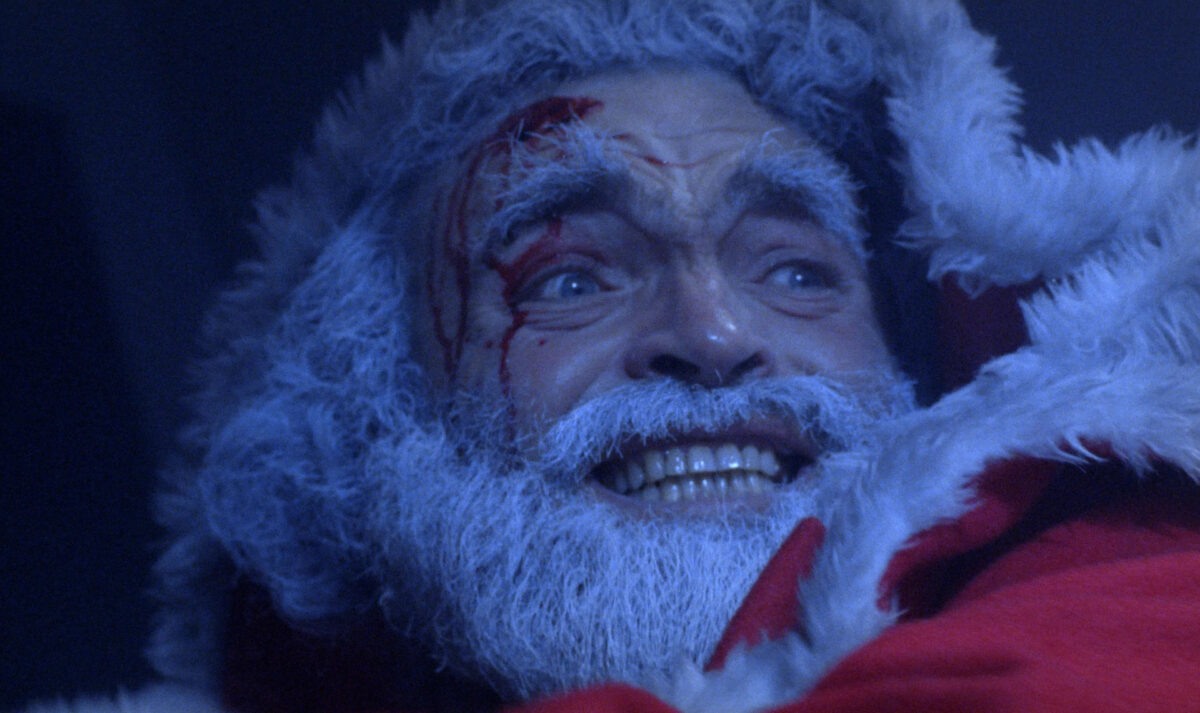
Although Thomas began Christmas hoping to steal a peek of the real Santa Claus, it’s a safe bet that he will never want to see St. Nick in any iteration again. As other films involving children who witness Santa breaking the moral code show, when they grow up and don the costume themselves, they dutifully perpetuate the deadly cycle. Would the curse of the red robes follow Thomas if he caught his reflection with a glistening silver beard looking back at him? But Thomas may escape that fate mainly because he believes he was punished for breaking the rules of tracking down Santa. He looked, and he found the bloodthirsty Santa he was promised. The suit will always taunt and await him, but Thomas probably won’t want to start selling toys to Santa next year — he’ll want to perfect the security system.
Stream Deadly Games: Dial Code Santa Claus on Amazon Prime
Stay up to date with all things Split Tooth Media and follow Craig on Twitter
(Split Tooth may earn a commission from purchases made through affiliate links on our site.)

